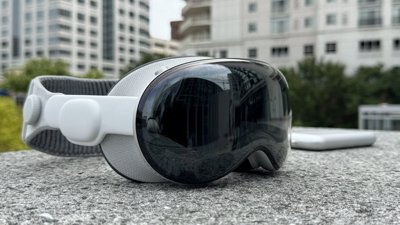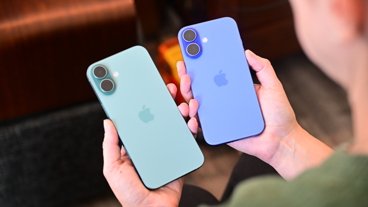Apple is once again limiting mmWave 5G connectivity to certain devices, with only iPhone 13 units sold in the U.S. capable of accessing the speedy network bands.
When Apple introduced 5G capabilities with iPhone 12 last year, it limited access to ultra-fast mmWave bands to handsets sold in the U.S. The tech giant was predicted to expand availability beyond its domestic market with iPhone 13, but it appears that the restriction will remain.
According to a support document, highlighted on Twitter by blogger Rene Ritchie, U.S. iPhone 13 models integrate baseband modems compatible with the n258, n260 and n261 bands, which operate at 26 GHz, 39 GHz and 28 GHz, respectively. Dubbed mmWave, these high-frequency bands feature wavelengths that can be measured in millimeters instead of centimeters or larger, and provide ample data transfer capability with bandwidths exceeding 3GHz.
Apple notes iPhone 13 models sold in other regions, including important markets like China, do not come equipped to handle high-frequency operating bands.
Whether iPhone 13 units sold in countries outside the U.S. integrate different Qualcomm radios is unclear, though MacRumors points out that product marketing material in those regions shows handsets without a mmWave antenna window. The cutout was first seen on iPhone 12 devices and its absence on non-U.S. hardware indicates Apple does not plan to activate mmWave on international iPhone 13 models at a later date.
Though mmWave on iPhone 13 appears to be a non-starter for users beyond U.S. shores, Apple on Tuesday said it will double 5G support to more than 200 carriers in 60 countries and regions by year's end. The handset supports a wide range of 5G bands, including those in the slower but more robust sub-6GHz spectrum.
 Mikey Campbell
Mikey Campbell








 Marko Zivkovic
Marko Zivkovic
 Malcolm Owen
Malcolm Owen


 William Gallagher
William Gallagher
 Amber Neely
Amber Neely
 Sponsored Content
Sponsored Content


-m.jpg)






9 Comments
The speed is nice but the range is so bad, that it reminds me of those old radio shack walkie talkies. They also heat up the phone pretty fast.
I was thinking of getting the iPhone 13 has an upgrade from my X but if this new feature is not available in Canada I’ll pass.
Arguably it's quicker and more economical for Apple to wait for Qualcomm's 5G hardware to become more capable, rather than seek out a myriad of highly specific components for each and every 5G implementation.
While sparse, mmWave implementations in the USA happen to be reasonably mature and standardised, which is the result of network providers and chip suppliers working in lockstep. Implementations of 5G and its features vary markedly even between network providers, let alone various regulation standards. It's not like you just pop in mmWave module+antenna and the phone can deliver performance with any network that advertises "mmWave" technology, no such hardware exists (yet).
Just like with 4G, the coming years will see iPhones capable of taking advantage of more 5G networks and features. For example: the iPhone 5 came in 4 variants: GSM North America, GSM International, GSM and CDMA and a China specific edition, while the 5S simply had one model to cover all regions and cellular providers - a nice bonus for travellers and reselling.